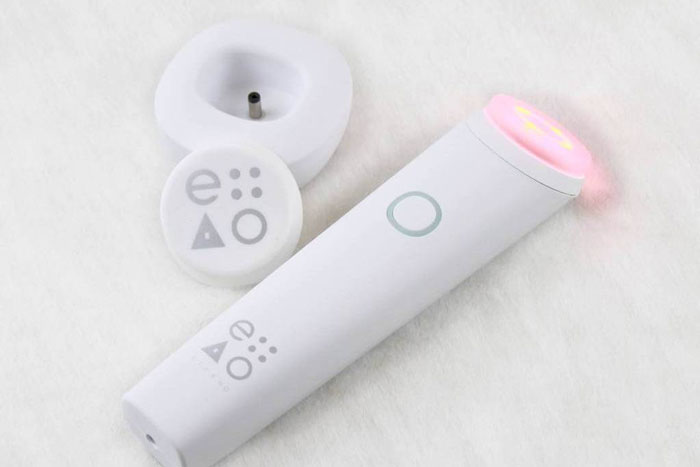 Feature Image by Eterno
Feature Image by Eterno
When it comes to cystic acne, treatment options are slim. Unlike regular zits, cysts come with beneath-the-surface inflammation. They’re painful, get worse from hormones (think: PMS symptoms), and leave behind acne scars that can take months to fade.
However, Dr. Amanda Doyle, a board-certified dermatologist and ambassador of Eterno Skincare, shares that photodynamic therapy (PDT) is a great alternative solution. “PDT is an excellent option for those who aren’t able to go on Accutane or who don’t want to pursue this treatment option,” she explains.
Interested? Below is everything you need to know about PDT.
What is it?
“PDT involves a topical solution, such as aminolevulinic acid or methyl aminolevulinic acid, [which is applied to the treatment area] by a physician,” Doyle begins. Then comes the LED light. “The light source helps to activate the actual treatment, [which has] anti-inflammatory and anti-bacterial effects. It also targets the actual oil glands themselves.” The key is that the photosensitizing agent is only absorbed by damaged skin cells. Left on for anywhere from an hour to overnight, it vaporizes cystic acne once you go under the LED light. Patients suffering from stubborn, recurrent cystic acne can experience relief that can last for months or even years.
Any additional benefits?
Along with resolving acne, PDT also boasts anti-aging benefits. It smoothes wrinkles, shrinks pores, removes sun damage, and retexturizes scarred skin. Its especially rejuvenating when combined with laser treatments. “PDT is often combined with a laser (i.e. Clear & Brilliant, Fractional lasers), a light source (red or blue light), or both to enhance the penetration of the medication,” Doyle explains. “[This results] in a more powerful treatment.” For example, IPL lasers plus PDT will treat hyperpigmentation. If you suffer from redness, consider a V-Beam laser.
How often can you get treatment?
“[Frequency] depends on the severity of the acne and how it responds to treatment, [but] I generally do treatments every two weeks until significant improvement of the acne is noted,” Doyle states. After a series of two to five sessions, results dictate whether or not repeat sessions are needed.
What’s the recovery time?
Immediately following the treatment, your skin will remain sensitive to light for 72 hours. Stay out of the sun and wear sunscreen at all times — even when you’re indoors. Doyle also notes that combination laser treatments require five to seven days of downtime. If you want to expedite the process, Doyle notes that at-home red light sources — like Eterno LED Devices — can also speed up healing times after the first three to seven days.
As always, consult your dermatologist before starting any treatment.
xx, The FabFitFun Team




